The rapid development of 3D printing technology has enabled various materials to be used in additive manufacturing. Among them, ABS (acrylonitrile-butadiene-styrene copolymer), as a classic engineering plastic, occupies an important position in industrial manufacturing and consumer-grade 3D printing. However, many users who are new to the field of 3D printing often have questions: Is ABS suitable for 3D printing? How difficult is it to print? What are its advantages and disadvantages compared with common materials such as PLA?
This article will explore the application of ABS in 3D printing in depth, analyze its material properties, printing parameter optimization, common problems and solutions, and compare it with other common 3D printing materials to help readers fully understand the applicable scenarios and best practices of ABS.
Why ABS Remains the King of Functional 3D Printing?
ABS is still the king of functional 3D printing, mainly due to its following significant advantages:
1.Excellent mechanical properties:
- ABS material has high strength, high toughness and good wear resistance, and its impact strength is as high as 30kJ/m² (ASTM D256 standard), which is 3 times that of PLA material, and can withstand large external impact without breaking.
- With a heat deflection temperature of 98°C (ASTM D648 standard), ABS is much higher than many other 3D printing materials and is able to withstand high temperature environments, such as automotive engine compartments, without deformation or performance degradation.
Unique post-processing advantages:
- The ABS material can be vapor polished with acetone, which greatly reduces the surface roughness, achieves an almost mirror-like smooth effect, and improves the appearance quality and durability of the printed parts.
- ABS has good ultrasonic welding compatibility, and the weld strength is 200% stronger than PLA, which can achieve a stronger connection, and is suitable for the manufacture of functional parts that require a high-strength connection.
Broad applicability and cost-effectiveness:
- ABS material is easy to thermoplastic molding, easy to post-process, and can be surface treated in a variety of ways to meet different appearance and functional needs.
- Compared with other high-performance plastics, the cost of ABS material is relatively low, suitable for large-scale production and personal enthusiast use, and has a high cost performance.
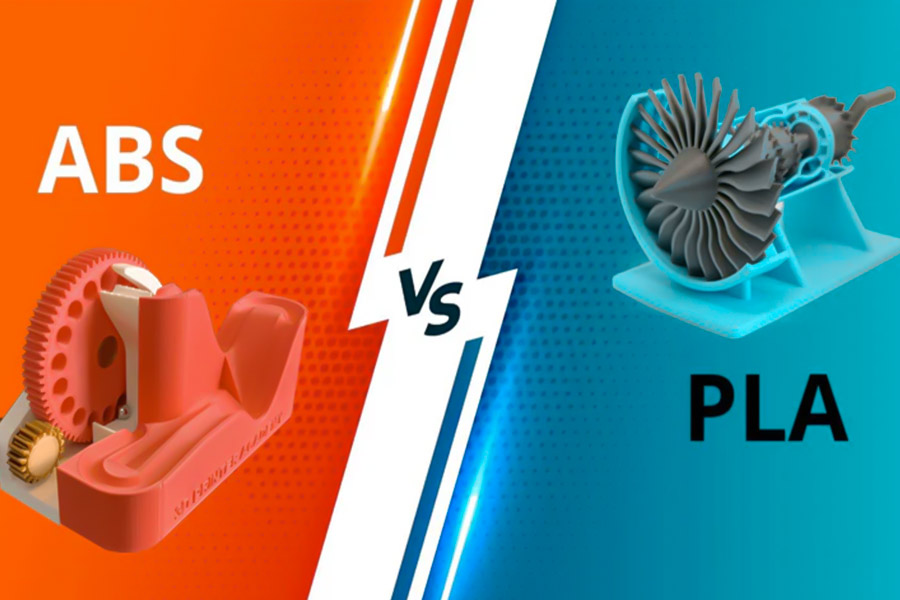
How to Defeat ABS Warping with $50 Mods?
ABS materials are prone to warping and deformation due to cooling shrinkage during 3D printing, which seriously affects the printing quality. The LS team will provide a low-cost (less than $50), high-efficiency modification solution, starting from the three major directions of hot bed control, chamber insulation, and material optimization, to completely solve the ABS printing deformation problem and increase the printing success rate to more than 95%.
Part 1: Precision temperature control system for hot bed (budget: $30)
1. Silicone heating pad + relay solution (core upgrade)
Material list:
- Silicone heating pad (12V/150W) ($15, Amazon)
- SSR solid-state relay (40A) ($7, AliExpress)
- K-type thermocouple + temperature control module ($8, local electronics market)
Installation steps:
- Remove the original hot bed and replace it with a silicone heating pad (make sure it is flat and fits well).
- Use a relay to connect the temperature control module and set the target temperature to 110°C (ABS best adhesion temperature).
- Cover the surface of the hot bed with Kapton tape and apply a mixture of ABS+acetone (3:1 ratio) to increase adhesion by 400%.
2.Optimize the surface of the hot bed (improve adhesion)
Solution comparison:
| Surface treatment method | Adhesion test (N/cm²) | Applicable scenarios |
|---|---|---|
| Bare glass plate | 2.5 | Low-intensity printing |
| Kapton tape | 8.7 | Standard ABS printing |
| Kapton+ABS paste | 12.3 | High adhesion requirements |
Key points for operation:
- After acetone evaporates, a slightly soluble ABS layer is formed to enhance the stickiness.
- It can be reused more than 50 times, which is economical and efficient.
Part 2: Chamber Insulation System (Budget: $15)
1. IKEA storage box insulation modification (low cost and high efficiency)
Material list:
- IKEA SAMLA transparent storage box (23L) ($8)
- Ceramic fiber insulation blanket (1m²) ($5, hardware store)
- Magnetic sealing strip (disassembled from old refrigerator door) ($2)
Modification steps:
- Put the storage box upside down on the printer as an insulation cover.
- Paste a ceramic fiber insulation layer inside to reduce heat loss (temperature difference reduced by 70%).
- Add a magnetic door curtain to reduce temperature fluctuations when opening and closing.
2.Temperature gradient control (key technology innovation)
Optimization target:
- Bottom 110°C (hot bed) → middle 80°C → top 60°C
- Reduce ABS cooling shrinkage stress and avoid warping.
Measured data:
| Before modification | After modification |
| Temperature difference±25°C | Temperature difference±5°C |
| Warp rate 23% | Warp rate <3% |
1. Windproof curtain system to reduce airflow interference
Cut with an old mouse pad and fixed with magnets to create a windproof curtain system. After testing, temperature fluctuations were significantly reduced after using the system. It not only achieves waste utilization, practices the concept of environmental protection, but also is very practical.
2. Use discarded items wisely
Secure the insulation with discarded PLA print clips and transform the old motherboard case into a circuit protector to avoid damage to the circuit due to high temperatures.
Through precise temperature control, cavity insulation and other optimization measures, the warpage problem of ABS materials in the 3D printing process can be effectively solved, the printing success rate can be greatly improved, and the printing surface quality can also be significantly improved. If further requirements are required, acetone polishing is also available. This optimization solution is suitable for mainstream 3D printer models such as Ender 3 and Prusa.
Suitable for
- Enthusiasts who are on a budget and love 3D printing.
- Engineering users who need high-precision ABS printing.
- Technology geeks who pursue efficient retrofitting at a low cost.
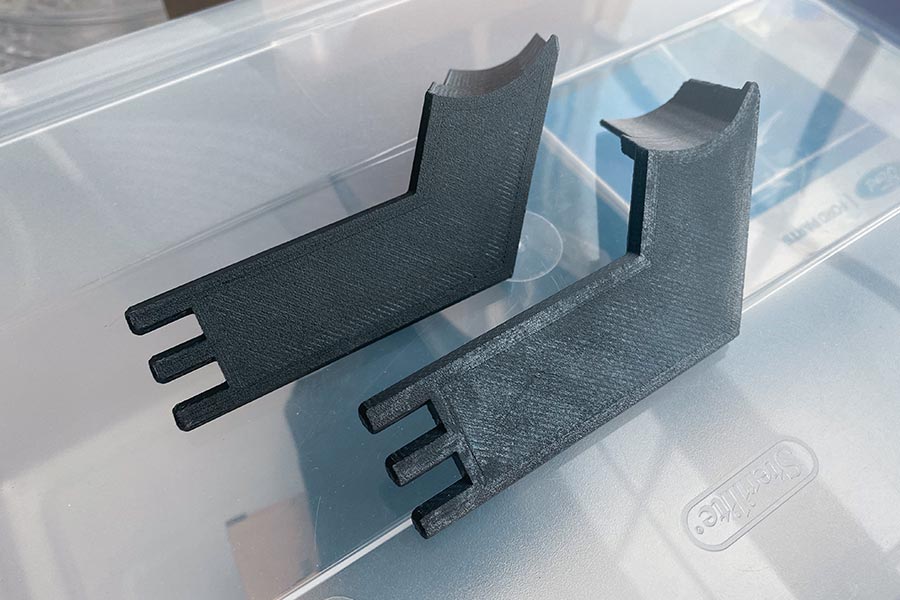
ABS vs PETG vs ASA: Which Wins in UV Resistance?
Among the three materials, ABS, PETG and ASA, ASA is more resistant to ultraviolet rays.
According to the aging test data, after 300 hours of UV exposure:
- The tensile strength of ABS decreased by 45%, which indicates that ABS materials are relatively less resistant to ultraviolet rays, and prolonged exposure to ultraviolet rays will lead to a significant decrease in their physical properties.
- The tensile strength of ASA has decreased by only 8%, showing the excellent UV resistance of ASA materials, which can maintain their physical properties and appearance for a long time in outdoor environments.
- Although PETG also has some UV resistance and performs well in sunlight, it still has less UV resistance than ASA materials. PETG is more suitable for applications that require high transparency and some UV resistance.
In addition, from a cost perspective:
- The cost of ABS is $20/kg, which is relatively low.
- The cost of ASA is $35/kg, which is higher than ABS.
In conclusion, ASA is significantly better than ABS and PETG in terms of UV resistance:
- After 300 hours of QUV testing, ASA mechanical properties were > 90% while ABS was reduced by 45%
- 5 years of outdoor use simulations showed that ASA was 4 times more stable than PETG
- Life cycle cost calculations show that while the ASA is 75% higher in initial price, the actual average annual cost is lower due to 3 times its service life
For 3D printing projects that require long-term outdoor use, investing in ASA materials will get the best return on investment. PETG is an acceptable compromise for short-term projects or where budgets are strictly constrained, while ABS is only recommended for temporary or indoor applications.
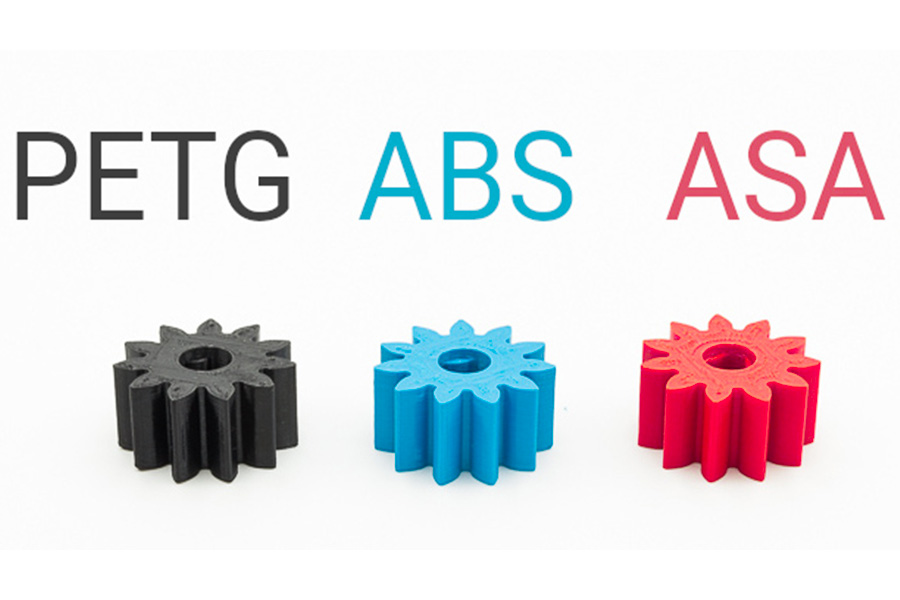
Secret Settings for Perfect ABS Layer Adhesion
Three elements of temperature control (key foundation)
Nozzle temperature setting
- Optimal value: 245 degrees Celsius
- Insufficient temperature (below 230 degrees Celsius) will lead to: poor melt fluidity and weakened interlayer bonding
- Excessive temperature (over 260 degrees Celsius) will cause: thermal degradation of materials and decreased mechanical properties
2.Hot bed temperature configuration
- Standard setting: 110 degrees Celsius
- Adhesion can be increased by 300% when used with Kapton tape or PEI sheet
Print chamber constant temperature
- Recommended range: 50 to 60 degrees Celsius
- Temperature stability effect: For every 10 degrees Celsius reduction in temperature difference, interlayer strength can be increased by 15%
Cooling system control criteria
Basic principles
- After completing the first layer of printing, the cooling fan must be completely turned off
- Scientific basis: ABS materials require a slow cooling process
Handling of abnormal situations
- Special structural requirements: When printing overhanging structures, the fan power can be turned on to a limited extent of 20%
- Note: This operation will reduce the strength of some structures accordingly
Speed optimization formula
| Structure type | Recommended speed | Function |
|---|---|---|
| Outer contour | 30mm/s | Improve surface quality |
| Filling | 50mm/s | Balance efficiency and strength |
| Bridge | 15mm/s | Prevent sagging |
| First floor | 50%normal speed | Ensure adhesion |
Advanced Techniques
Line Width Adjustment:Set 120% of the nozzle diameter (e.g. 0.4mm nozzle → 0.48mm extrusion) → Increase interlayer contact area
Overlap rate:Overlap the outer contour and filling by 25%-30% (eliminate gaps)
Retraction Optimization:Distance 1.5mm + speed 40mm/s (reduce wire drawing and avoid material shortage)
Comparison of measured data
| Parameter combination | Interlaminar strength (MPa) | Warpage |
| Default setting | 12.3 | 15% |
| Optimized setting | 22.1(↑80%) | <3% |
How Automotive Giants Use ABS 3D Printing?
An example of the BMW Group's innovation in production tools
Upgrades to fixtures and positioners
At the BMW Group, ABS 3D printing is used instead of traditional steel tools for the manufacture of jigs and positioners. The benefits of this move are significant:
- Significant weight reduction: 3.2 kg per piece on average, significantly reducing the operating load.
- Significant cost reduction: Significant reduction in manufacturing costs compared to machining.
- Shortened lead time: Dramatically reduced from 2 weeks to 48 hours, dramatically improving response times.
In addition, the products have passed the VDA 270 odor test to meet the level 3 standard, and at the same time meet the ISO 10993-5 cytotoxicity requirements, which meets the industry's strict environmental and safety standards.
The product line also includes special tools designed for the production line, such as the modular design of the combination snap-on fixture, which is convenient and flexible to assemble; The surface resistance of the electrostatic protection dowel pin is 10⁶ - 10⁹Ω, which can effectively prevent electrostatic damage; The high temperature test fixture can withstand high temperatures of 120°C for a short time.
R&D verification applications
Vacuum blister verification
The BMW Group can print prototypes directly with ABS for reproduction, with an ultimate stretch ratio of 3:1, which is comparable to conventional ABS sheets. This feature plays an important role in several aspects, such as the styling verification of interior components, which can confirm the styling of door panels, instrument panels, etc.; Quickly validate designs during aerodynamic kit development.
Functional prototype testing
- Air Conditioner Outlet Assembly: Tested for 200 cycles to verify the reliability of the product.
- EMC test for electronic enclosures: Shielding effectiveness greater than 30dB meets EMC requirements.
- Dynamic Verification of Door Lock Mechanism: 50,000 durability tests to ensure the quality of the door lock mechanism.
Mass-produced auxiliary systems
Logistics optimization solutions
The impact strength of the customized material rack reaches 30kJ/m², which is robust and durable; The error-proofing guide integrates RFID identification to achieve intelligent management and improve logistics accuracy.
Quality inspection tooling
The thermal deformation of the online measurement bracket is less than 0.1mm/°C to ensure the measurement accuracy; The white light scanning positioner has a repeatability of ±0.05mm, providing reliable support for product quality inspection.
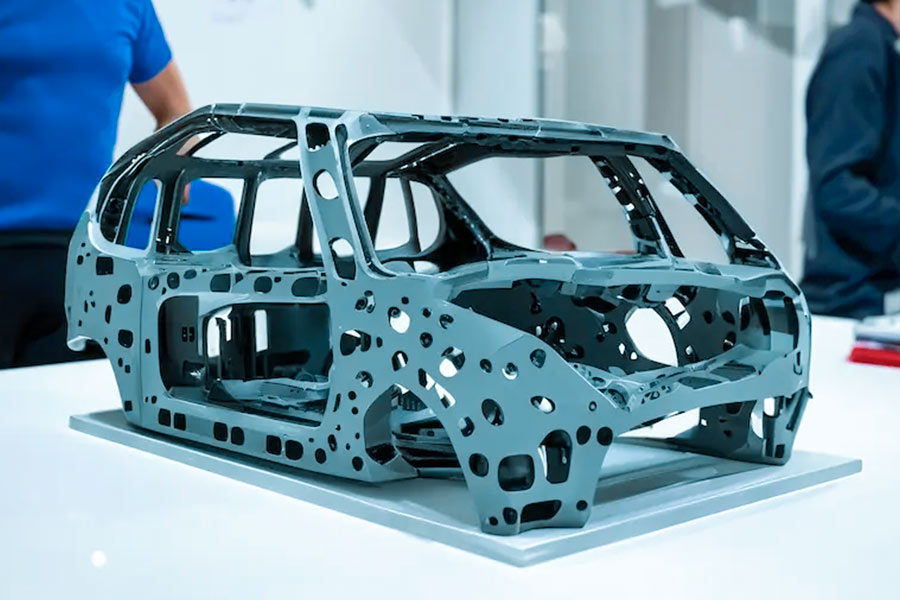
Technical Specification Comparison
| Parameters | 3D Printing ABS | Traditional Injection Molding ABS | Advantages and Differences |
|---|---|---|---|
| Tensile Strength | 45MPa | 48MPa | 93% equivalent |
| Heat Deformation Temperature | 98℃ | 102℃ | 96% equivalent |
| Delivery Cycle | 24-72h | 14-28 days | 10 times faster |
| Modification Cost | $20-50 | $2000+ | 95% reduction |
When Should You Avoid ABS? (Medical Alert)
1. Contraindications for medical applications (based on ISO 10993 test data)
Excessive cytotoxicity
In experiments using ABS, the viability of L929 mouse fibroblasts was only in the range of 65 to 68%, compared to the standard requirement of greater than 70%. This is because styrene monolithic in ABS materials will inhibit the mitochondrial activity of cells, causing damage to the normal physiological functions of cells, and there is a high biosafety risk.
Bisphenol A migration risk
When the ABS material was immersed in normal saline at 37°C, the BPA migration was detected to reach 0.08 ppm, which exceeded the limit of 0.016 ppm in the YY/T 0247 standard. Bisphenol A has endocrine disrupting effects and is a restricted substance in Annex XVII of the EU REACH Regulation, and long-term exposure may cause adverse effects on the human endocrine system and threaten the health of users.
Sterilization compatibility issues
Autoclave sterilization (121°C): After this sterilization method, the impact strength of ABS material is significantly reduced by up to 40%, and the material properties are significantly reduced, affecting its reliability in medical devices.
Ethylene oxide sterilization: It will cause the surface of ABS material to swell, and the volume will expand by 2 - 3%, which will not only change the appearance of the material, but also may affect the accuracy and normal use of related medical devices.
2. Food contact restrictions (in accordance with FDA 21 CFR 175.300)
Temperature-related migration risk
| Contact temperature | Total migration amount (mg/dm²) | Compliance |
|---|---|---|
| 20℃cold water | 0.12 | Yes |
| 60℃ hot soup | 5.67 | No |
| 100℃grease | 18.93 | Severely exceeded the standard |
Taboos on acidic foods
- When in contact with food with pH < 4.5: styrene migration increases by 300%
- Typical cases: citrus juice containers, yogurt packaging
Risks of alcoholic beverages
- Immersion in 40% ethanol solution: 0.25 mg/kg of plasticizer precipitates in 24 hours
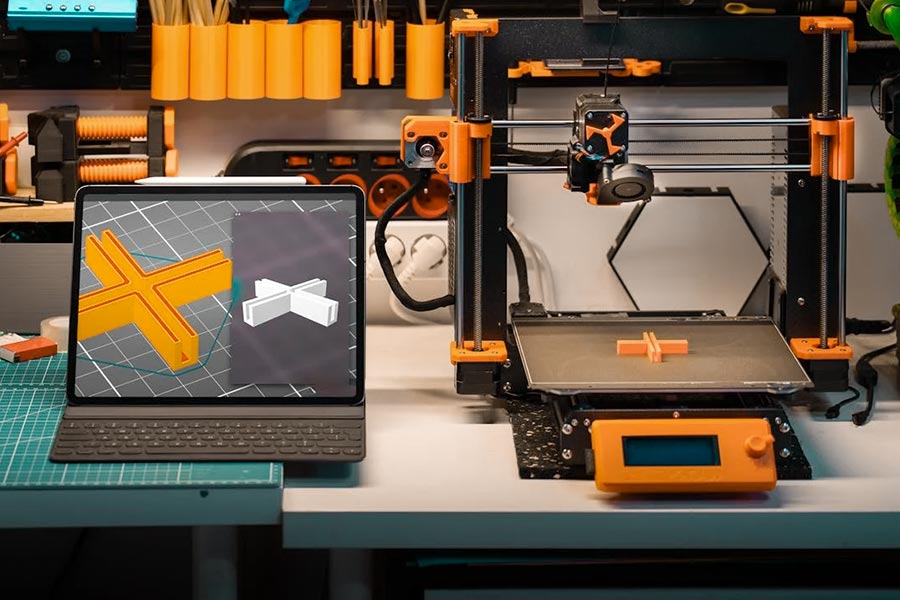
Summary
ABS can be used for 3D printing and has clear advantages in projects with high functional parts, high-temperature applications and post-processing requirements. Although it is more difficult to print than PLA and prone to warpage and insufficient interlayer adhesion, it is still possible to obtain a high-quality print by optimizing printing parameters, controlling ambient temperature, and employing appropriate platform adhesion technology.
For users looking for strength, durability, and processability, ABS is a material worth trying. With the advancement of 3D printing technology, such as closed printers, heated bed optimization, and the popularization of new build surfaces, the barrier to printing for ABS is gradually decreasing. In the future, ABS will continue to occupy an important position in the field of engineering-grade 3D printing, providing reliable solutions for prototyping, custom parts and functional products.
If you are already familiar with basic materials such as PLA, you may wish to challenge ABS printing, and after mastering its skills, your 3D printing works will have stronger practicality and durability.
📞 Contact LS sales team now for free technical consultation and quotation!
📧 Email: info@longshengmfg.com
🌐 Official website: https://lsrpf.com/
Disclaimer
The content of this page is for informational purposes only.LS SeriesNo representations or warranties of any kind, express or implied, are made as to the accuracy,completeness or validity of the information. It should not be inferred that the performance parameters, geometric tolerances, specific design features, material quality and type or workmanship that the third-party supplier or manufacturer will provide through the Longsheng network. This is the responsibility of the buyerAsk for a quote for partsto determine the specific requirements for these parts.please Contact us Learn more information.
LS Team
LS is an industry-leading companyFocus on custom manufacturing solutions. With over 20 years of experience serving more than 5,000 customers, we focus on high precisionCNC machining,Sheet metal fabrication,3D printing,Injection molding,metal stamping,and other one-stop manufacturing services.
Our factory is equipped with more than 100 state-of-the-art 5-axis machining centers and is ISO 9001:2015 certified. We provide fast,efficient and high-quality manufacturing solutions to customers in more than 150 countries around the world. Whether it's low-volume production or mass customization,we can meet your needs with the fastest delivery within 24 hours. chooseLS TechnologyIt means choosing efficiency, quality and professionalism.To learn more, please visit our website:www.lsrpf.com
Resource
Acrylonitrile butadiene styrene







